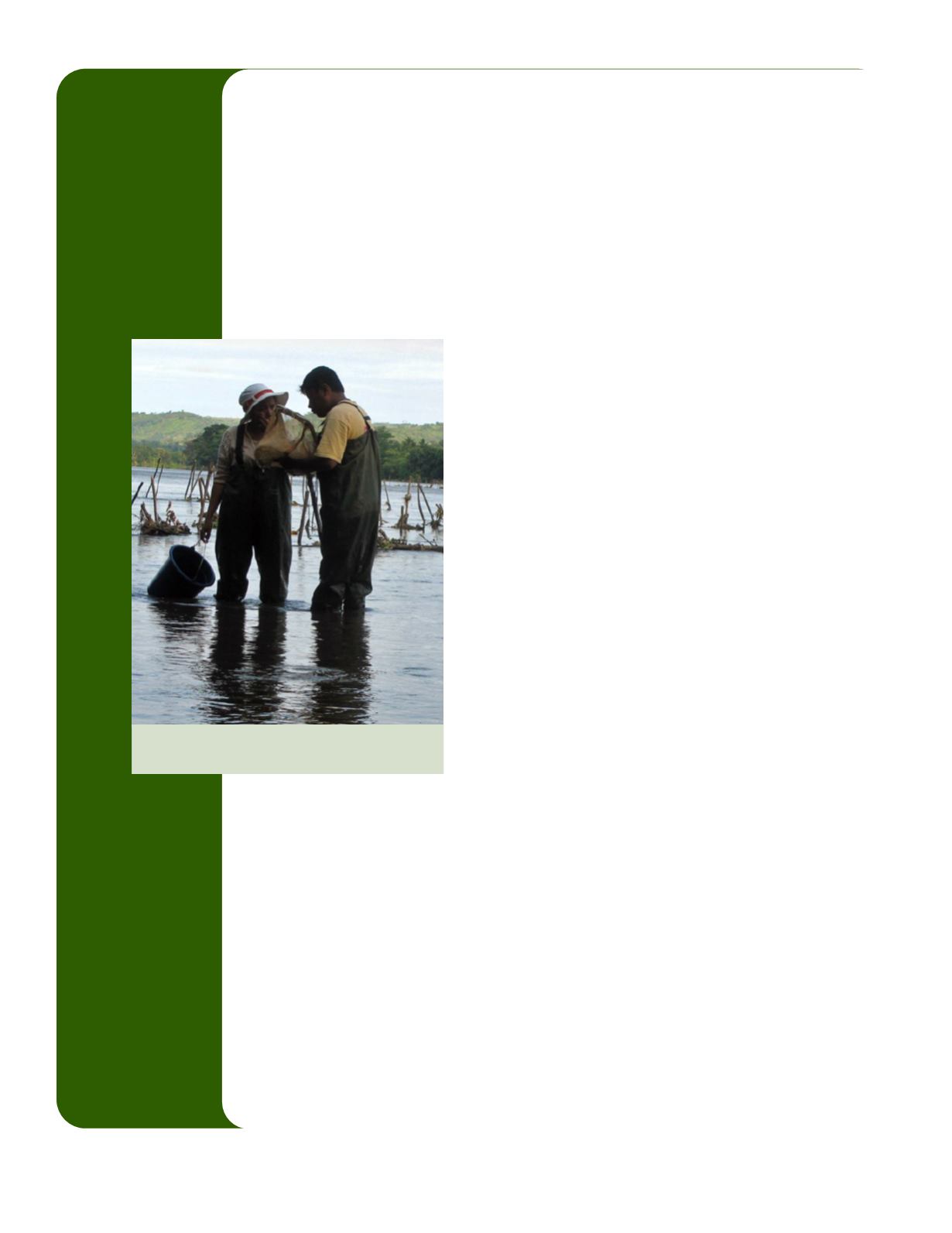
P A G E 8
V O L . 4 , N O . 1
J U L Y 2 0 1 5
A New Collaboration Begins with Professor Dr. Tsilavana
RAVELOMANANA: Assessing Wild Freshwater Fish Diversity
and Conservation
by Dr. Erik Patel and Charlie Welch
Contrary to early accounts of “depauperate ichthyofauna”, Madagascar’s native fresh-
water fish diversity is now recognized as truly impressive and consistent with the large
size of the island. At last count, 143 native species of
freshwater fish exist in Madagascar in 54 genera and 21
families. Endemism at the species level is high and esti-
mated between 60 to 90% (Sparks and Stiassny, 2003).
Unfortunately, freshwater fish are among the most heavily
threatened groups of animals in Madagascar. The intro-
duction of non-native species, particularly predatory Asian
snakehead (
Channa maculata
), has wreaked havoc on na-
tive species. In their classic review, Benstead et al. (2003)
point out that “As anyone who has collected fish in Mada-
gascar can attest, it is extremely difficult to locate a body
of water, no matter how isolated, where the catch is not
dominated by exotic species” (p. 1109). Deforestation also
has numerous deleterious effects on rivers, such as in-
creased sedimentation due to erosion, reduced insect as-
semblages resulting in less food for fish, and changes in
water temperatures. A third major threat is overfishing,
the impacts of which “…have largely been ignored until
recently…” (p. 1109). The extensive use of chemically
treated mosquito nets with very tiny holes for fishing, has
devastated native fish communities by killing even infants and juveniles.
We are very excited about our latest collaboration with Professor Dr. Tsilavana RAVE-
LOMANANA, an Ichthyologist (fish specialist) and Professor at the University of Antanana-
rivo. We recently supported his expedition to the Bemarivo and Androranga Rivers, two
of the largest rivers in the SAVA region. We recruited him to assess fish and invertebrate
diversity in these large waterways as well as to assess the general health of these systems
and conservation threats. He and his assistant, Fetra ANDRIAMBELOMANANA spent most
of the month of December (2014) seining and sampling in the above mentioned rivers
and some of their tributaries.
In all, the team documented 22 taxa of fish in their aquatic biological inventory. Of
those taxa, 7 species are endemic to the region, 6 species are nonnative exotics, and the
remaining 9 species are native to Madagascar, but also exist in other regions of the coun-
try. Importantly, three of the native species found (
Bedotia marojejy
,
Mesopristes elon-
gatus
and
Paretroplus polyactis
) are threatened with extinction and have been designated
as “vulnerable” by the IUCN. The species diversity overall was disappointing but not sur-
Dr. Tsilavina with his assistant Fetra
Andriambelomanana


